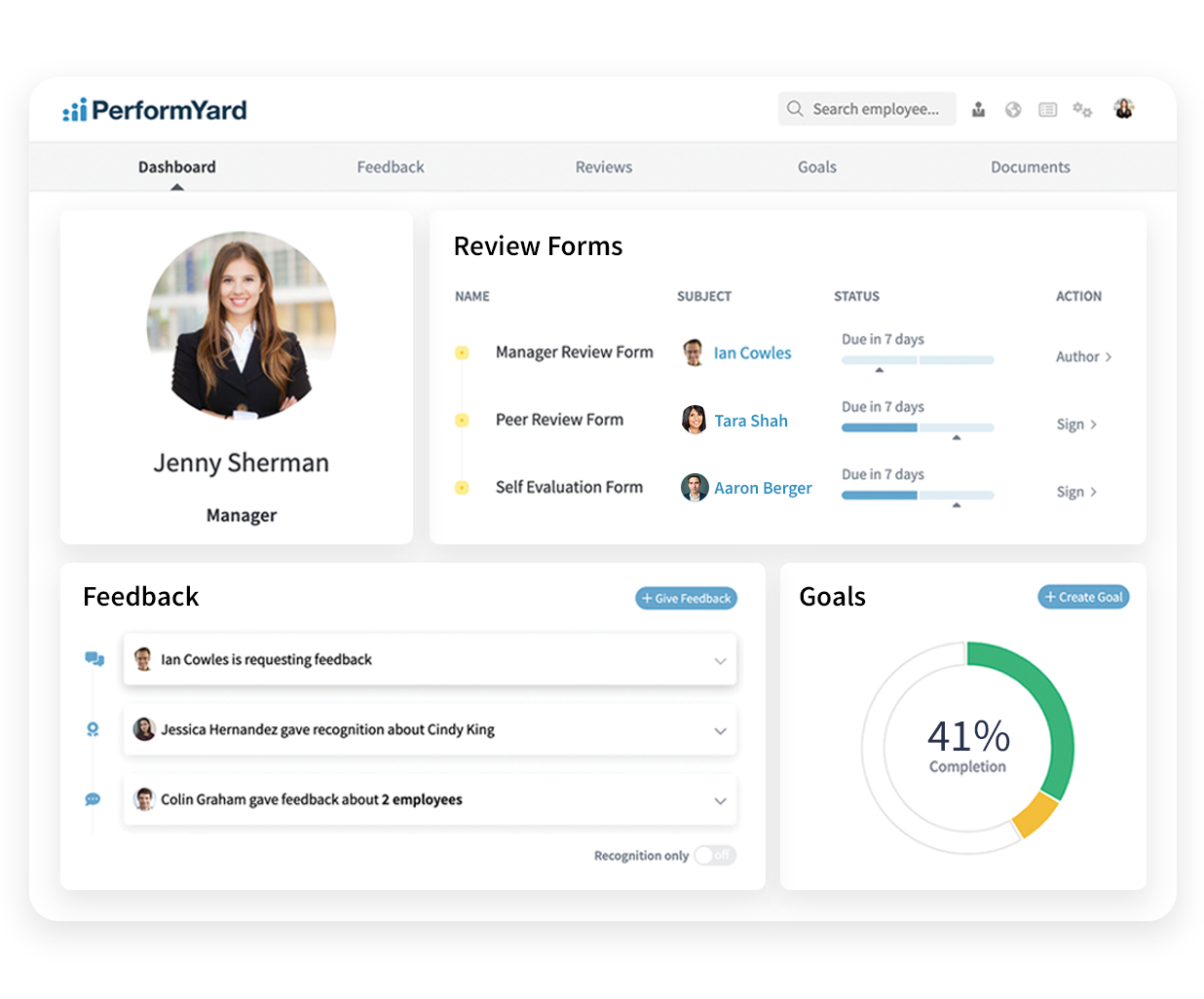Employee Coaching Template - Example PDF Form to Log Training
Employee coaching is essential to foster growth and development in the workplace. And with the use of templates, managers can maintain consistent communication, engage employees, and ensure alignment with organizational objectives.
In this article, we’ll share the benefits of adopting coaching templates and provide examples to kickstart your program.
What are the Benefits of Using Coaching Templates?
Coaching templates are structured forms used during employee coaching sessions. They guide conversations and ensure critical areas are addressed. Additionally, they typically include sections for setting goals, tracking progress, documenting challenges, and providing feedback.
⮕ Cick here to download our free PDF of an example employee coaching template
These forms serve as a formal record of the coaching interaction between the coach and the employee. They help participants stay focused on actionable steps for improvement. By standardizing the process, coaching forms encourage a more organized and effective dialogue, making it easier to monitor employee development and measure outcomes over time. This also helps to prevent misunderstandings and help employees stay accountable.
Related: Best Employee Coaching Software
Key Parts of Coaching Templates
An employee coaching form can look different from industry to industry. For example, they can vary based on what goals you are reaching for and what steps you think you need to take. However, some consistencies should span across every employee coaching form.
- Coaching Topics: These should be the specific focus areas for the coaching session. They can include skill improvement, behavioral adjustments, or performance enhancement.
- Desired Outcomes: Clear and measurable goals are vital for progression in the workplace. This part of your coaching templates should help your employee shift and maintain focus on their goals.
- Benefits of Change: This aspect should be a summary of the benefits of development. Showing how the recommended changes will positively impact the employee’s performance can drive an employee to achieve their goals. It also contributes to team or organizational success.
- Action Plan: Discussing how these goals will be approached is essential. This aspect of the form should include specific, actionable steps the employee will take. It should also include strategies to overcome any potential obstacles.
- Timeline: These are not meant to make an employee feel stressed or short on time. Creating defined deadlines or milestones helps measure progress. They also ensure accountability for the agreed-upon actions.

Coaching Process Considerations
Although these key aspects are the most important parts of employee coaching templates, some other steps can also help make your template more effective and approachable. Here are some of the steps that you can take to put the finishing touches on your process:
1. Encourage Employee Response and Feedback
Allow space in your meetings for employees to share their thoughts, concerns, and reactions to the coaching session. This fosters open communication, ensuring that employees feel heard and valued. Encouraging feedback also helps identify areas of improvement for future coaching sessions.
⮕ Click here to download our free PDF of an example employee coaching template
2. Performance Summary
Include a review of the employee's recent performance. Additionally, highlight both successes and areas for improvement. This provides context for the coaching session and ensures that the conversation is grounded in specific, relevant examples that can guide future actions.
3. Challenges and Obstacles
Recognize and address any roadblocks the employee may be facing. By spotting challenges early, you can work together to find solutions. This will help the employee achieve their goals and stay motivated.
Related: How to Improve Retention with Retail Employee Engagement
4. Follow-Up Plan
A clear follow-up plan is crucial for tracking progress after the coaching session. Include dates for future check-ins, allowing the coach and employee to review advancements, reassess goals, and make necessary adjustments to the action plan.
5. Signatures
Signatures from both the coach and the employee formally confirm the coaching session. This step ensures accountability, showing mutual agreement on the goals, action plans, and next steps outlined during the conversation.
6. Integrate Technology
Using performance management software like PerformYard can greatly improve your coaching. PerformYard simplifies tracking progress, setting goals, and gathering feedback. By using PerformYard, you can easily document coaching sessions, align individual goals with broader organizational objectives, and monitor employee development over time.
⮕ Cick here to download our free PDF of an example employee coaching template
One key benefit of PerformYard is its ability to automate reminders for follow-up sessions. This allows you to stay on track with action plans and prioritize development. Additionally, real-time feedback capabilities allow for more dynamic communication between coaching sessions. Overall, integrating PerformYard ensures a more streamlined, consistent, and data-driven approach, ultimately leading to better employee performance and engagement.




